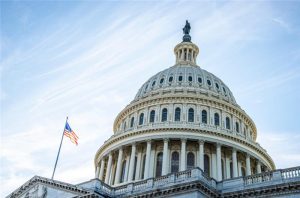The past week has seen yet more swings in financial markets, following Trump’s announcement to postpone most reciprocal tariffs, while simultaneously increasing tariffs on Chinese imports.
After an initial rally in equity markets post Trump’s announcement, equity indices have given back a lot of the gains. Global bond markets have not been immune to volatility either, with the benchmark US government 10-year bond yield shifting from 4.4%, at the end of March, to 4%, immediately after ‘Liberation Day’, and back again. Meanwhile, the US Dollar has weakened as the attraction of US assets has been undermined.
This level of genuine volatility has not been seen since COVID, making any attempt to calculate the long-term implications of these short-term policy changes extremely challenging.
Our internal Asset Allocation Committee has been meeting regularly during the week and will do so over the coming days and weeks. We will continue to communicate any meaningful changes in our view but at this point we remain close to neutral relative to clients’ long-term strategic asset allocations. This reflects the current balance between upside and downside risks, and our expectation that markets are likely to remain sensitive in the short term to headline-driven moves in either direction.
In equities if we take a constructive view, consumers and corporations remain in good financial health, the dollar and oil are lower, and government initiatives could be used to offset some of the tightening pressures that US consumers will feel from tariffs. It is also possible that “big beautiful” supportive spending bills and tax cuts could be forthcoming in the coming weeks. Confidence about rate cuts by the Federal Reserve remains high, reflecting less inflation pressure (March CPI -0.1% MoM) and by ongoing expectations for medium-term inflation remaining anchored. There is also the meaningful upside risk of de-escalation with China and steps towards a trade deal.
However, a significant bear case remains, which is not fully reflected in markets and is an increasing probability if uncertainty persists. Firstly, despite the delay in tariffs, the uncertainty they have caused has not been removed. We expect corporations to ‘sit on their hands’ and not make any major investment or capex decisions until real clarity is provided. This will be a significant headwind for growth. Coupled with this, consumers across all income cohorts are feeling under pressure and are likely to tighten their belts, which is being reflected by companies starting to remove guidance. Indeed, although most reciprocal tariffs were postponed, the increase in the tariff on China to 145% resulted in the US average tariff rate rising from 23.9% (as of Tuesday 8 April) to 26.2% (as of Wednesday 9 April). The first-order effect of this will be more inflation pressure on goods, which means the Federal Reserve will be less willing and able to rescue growth with rate cuts.
Equity valuations globally have moderated, and there remains considerable dispersion within the different regions and sectors. But earnings and margin expectations have not yet been reduced, which means the true level of valuation reset is challenging to be confident about. Earnings reports for the first quarter have started and will be crucially important over the next few weeks.
Within fixed income, it is a similar story of balanced risks in the short term, with one key question emerging in the past week: Why have US government bond yields risen and not benefited from a flight to safety?
Recent tariff announcements by the White House have prompted investors to reassess the long-term impact on the US economy. Beyond inflation concerns, investors are questioning how much revenue these tariffs will actually generate. If higher costs reduce import volumes, the expected $600bn in tariff revenue to fund tax cuts may fall short—raising fears of increased bond issuance to cover the gap.
Another factor is whether major trading partners will redirect exports to regions such as Europe or Southeast Asia. This would imply a reduction in USD reserves held by the likes of China and Taiwan, a significant portion of which are typically invested in US Treasuries, thereby reducing demand for US debt. Additionally, projected US GDP growth could weaken over the next 12–18 months due to declining domestic demand and potential job losses. This would further pressure government revenues and exacerbate the budget deficit.
Tariff concerns have affected global markets. German bund yields have fallen on fears of slowing growth, while longer-dated UK gilt yields have risen due to domestic economic concerns. Credit spreads globally have widened in line with US market movements.
At this moment in time it is difficult to have a strong view on how long the current market volatility will last. We feel a little more assured now compared to a few days ago after the White House acknowledged how the rise in government bond yields would negatively impact the economic outlook, as well as offering a modicum of flexibility on the actual tariff rates chargeable to its non-China trading partners. That said, risks remain elevated, underscoring the need for careful assessment and an adaptable approach.




